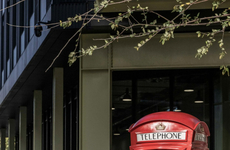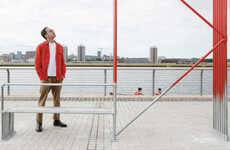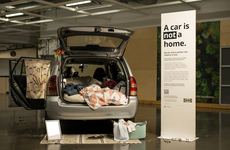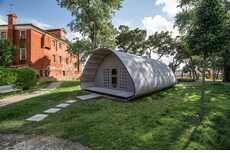
Nils Norman Depicts the Questionable Nature of ‘Defensive Architecture’
Alyssa Pittao — June 13, 2014 — Art & Design
References: dismalgarden & slate
An all too common image for any urbanite: a homeless man or woman posted on the curb or escarpment steps asking for spare change. More often than not, these marginalized bodies are regarded with ignorance at a safe distance. Shedding light on the struggle for this often dismissed group, London-based artist and photographer Nils Norman captures what he calls the “defensive architecture” of large urban metropolises (including Madrid, New York, and London) that seek to reestablish control over city spaces. His work speaks to the growing tension between public and privatized urban locales. In his on going “bum-free” photograph archive, Norman captures these “anti” spaces of contemporary life as designs which deter the homeless from loitering, entering, or resting where they are considered unwanted. Most recently, a collection of viral photographs documenting the installation of anti-homeless sidewalk spikes outside a residential building in Southwark, London sheds light on the significance of Norman’s coverage, and will hopefully sway some to address the unsettling nature of this call for the removal of homeless bodies from communal urban zones. More of Norman’s work on challenging the designs of conventional urban planning can be found in his 2000 book, The Contemporary Picturesque
Trend Themes
1. Defensive Architecture - Disruptive innovation opportunity: Develop inclusive and accessible urban design solutions that do not marginalize or exclude vulnerable populations.
2. Public-private Tension - Disruptive innovation opportunity: Explore collaborative approaches between public and private sectors to create urban spaces that balance the needs of all community members.
3. Challenging Urban Planning - Disruptive innovation opportunity: Reimagine urban planning practices to prioritize social equity and human well-being over exclusive and exclusionary designs.
Industry Implications
1. Architecture and Design - Disruptive innovation opportunity: Integrate social impact considerations into architectural projects to create inclusive and equitable urban spaces.
2. Urban Planning - Disruptive innovation opportunity: Embrace participatory planning approaches and community input to create cities that serve the needs of all residents.
3. Social Advocacy - Disruptive innovation opportunity: Advocate for policy changes and public awareness campaigns to address the issue of defensive architecture and promote social inclusion in cities.
6.7
Score
Popularity
Activity
Freshness























